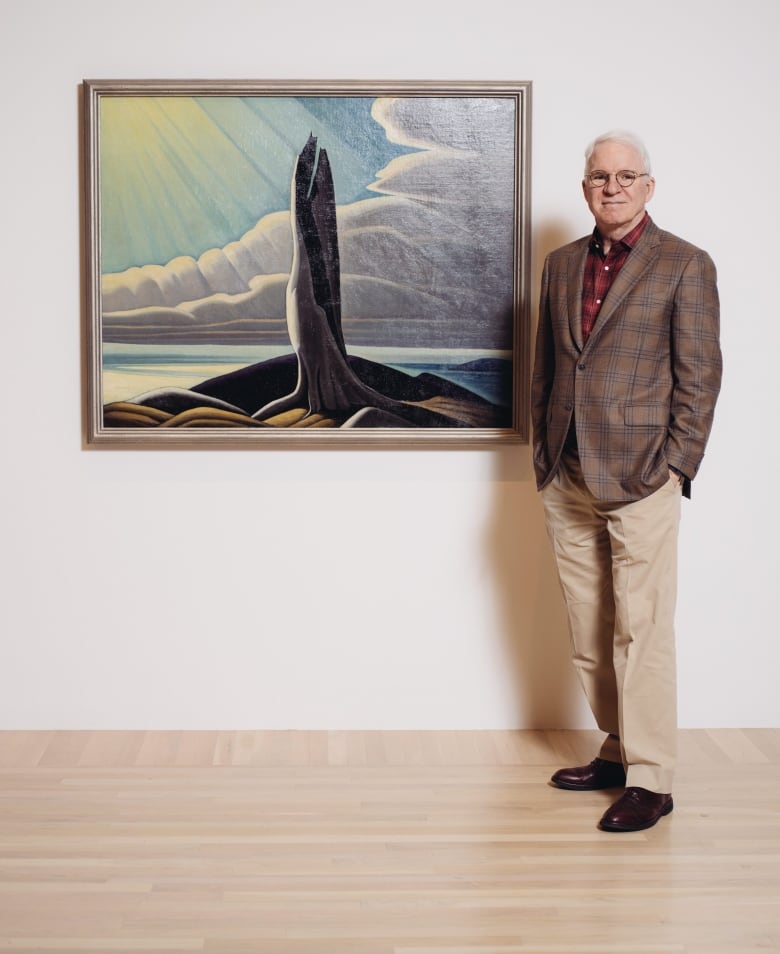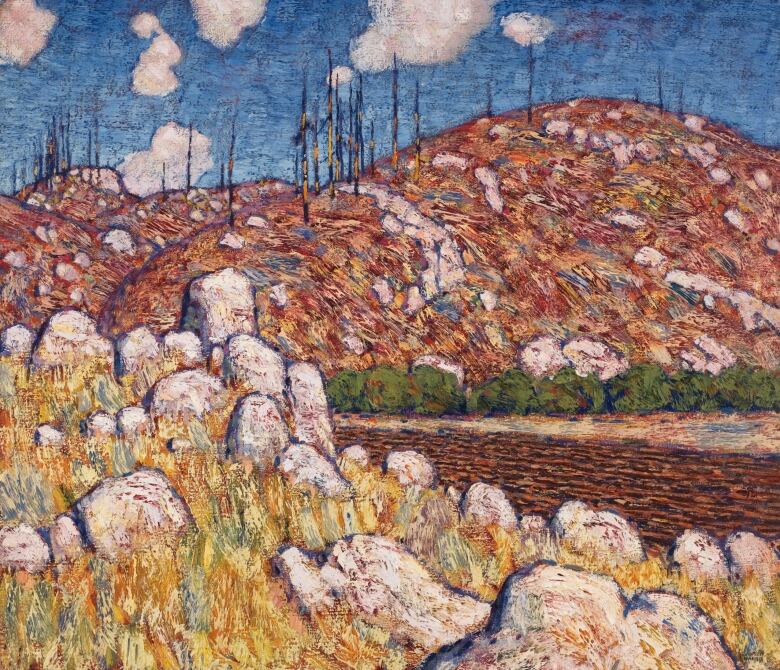Why Lawren Harris's Algoma sketch is worth your house (or more)
'Canadians depicting land in a style that is distinctly Canadian': art specialist on Group of Seven

It's expected theLawren Harris sketch Algoma (Algoma Sketch 48)will sell for $400,000 to $600,000 at auction today in Toronto comparable to the average price of a house in Canada.
To judge the quality of a diamond, wefamously defer to the "five Cs,"but how do you gauge the value of something as subjective as artwork?What makes one painting you loveworth millions and another destined for a garage sale?
It's not mere speculation: experts consider a variety of factors to determinethe value of that picturesque pastoral orcolour-blocked canvas.
Art specialist Rob Cowley, president of Consignor Canadian Fine Art, outlines what makes Algomaan artwork to snatch up.
1. Who is the artist?
Not only is the basic identity of an artistimportant, but also his or her ability and importance within the history of art, within an artistic movement and within a country, Cowley said.
In the case of Algoma, it's a work by Harris: one of Canada's most respected artists,a figurecentral toand whohelped finance one of Canada's most important artistic collectives the Group of Seven and a championofpeerssuch as Emily Carr.
- CBC ARCHIVES |The Studio Building inspires Group of Seven artists
- CBC ARCHIVES |The Group of Seven: a new artistic expression of Canada
The First World War was a defining moment in Canadian history, but "as we were moving away from mother countries, the visual arts were really last. We were stuck in the European style," Cowley said.
"The Group [of Seven] was a reaction to that: creating an identity" and breaking away from traditions,he noted.
They were "Canadians depicting land in a style that is distinctly Canadian."
2. Subject matter
The Group of Seven created many preparatory oil sketches [paintings hastily created on-site to capture light andsurroundings], but only a small percentage became signature works not all made it to canvases, Cowley said.
Dating from 1919 or 1920, Algoma subsequentlyinspired at least four Harris canvases, including one (Island, MacCallum Lake) in the collection ofthe Vancouver Art Gallery.
The region depicted was important for both Harris and the group because their first trip to the northeastern Ontario area marked a welcome reunion following a dark period in whichthe associateswere separated during the First World War and also lost their talented colleague Tom Thomson.
This fruitful time marked the beginning of their official association as the Group of Seven, Cowley noted.
Living and travelling in a repurposed train boxcar on that trip, they were "not only painting and creating work in this paradise," but also "spending their time discussing and debating art, talking about culture and really getting to the crux of so much of what the Group of Seven was based on."
3. Freshness to the market
Understandably, rarity can make for a hot commodity in the art world:for instance,if a piece verified as authentic has never appeared in exhibition, never been included in books and/or hasn't been seen in decades.
With Algoma, this is indeed the case. The paintingwas purchased from the Mellors-Laing art gallery in Toronto around 1940 andthen remained in one Canadian family's private collection (with a detour to Australia for the past 30 years).
4. Condition
Whether an artwork has been treated or cleaned in any way makes a difference, Cowley said.
5. What's in fashion

Some artists are always in fashion: think Pablo Picasso or Andy Warhol. In Canada, Harris has been an art world rock star for decades. "When you go back looking at auctions starting in Canada in the 1960s and 1970s, Lawren Harris was central in those sales, even then," Cowley said.
"The first [Canadian] artist to sell for $1 million in the first 15 years" was Harris, he added.
The perennial favourite had boffo numbers at last week's Heffel auction in Vancouver and also set arecord last fall with a $4.6-million (including premiums) sale in Toronto. Many suspect he isgetting a boost from the recent Steve Martin-curated exhibit in the U.S. andheadedfor Toronto's Art Gallery of Ontario (AGO)later this summer.

"It's very Canadian that we take pride in our figures when they are recognized and beloved outside of our borders,"Cowleysaid.
"We really are seeing how audiences outside of our borders are captured by [the Group of Seven]... seeing a voice from another country depicting the land of their country in a distinctive style."
Algoma (Algoma Sketch 48) will be sold at Consigner Canadian Fine Art's inaugural live auction of important Canadian art Tuesday evening in Toronto.Other highlights set to cross the block include two additional Harris paintings (House, Toronto and Shacks), an early Group of Seven sketch by Frank Johnston, a childhood swimming scene from William Kurelek and a 1962 canvas by Jean Paul Riopelle.












_(720p).jpg)


 OFFICIAL HD MUSIC VIDEO.jpg)
.jpg)



























































































